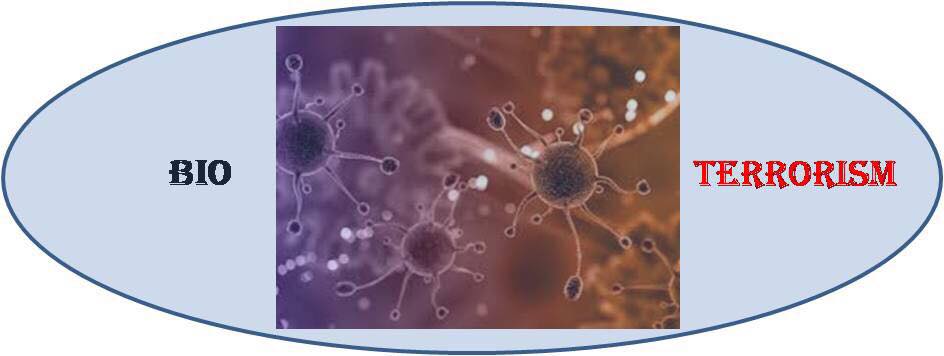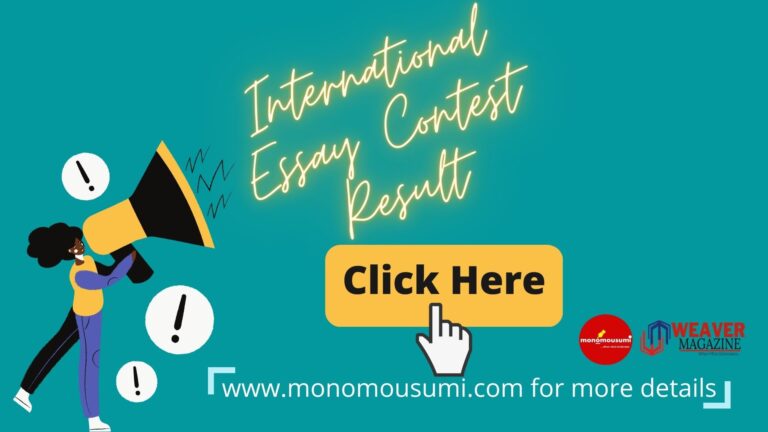
“The next weapon of mass destruction may not be a bomb,” Lawrence O. Gostin, the director of the World Health Organization’s Collaborating Center on Public Health Law and Human Rights, told the New York Times. “It may be a tiny pathogen that you can’t see, smell or taste, and by the time we discover it, it’ll be too late.”
A persistent paradox places itself at the forefront of our mind, when we think about our world. While we see all people as equal entities, as they speak about human rights and liberty, we also see the inclination of individuals towards hatred, discord and resentment. Perhaps, the most notorious instance of the spread of malevolence reminds us of the rampant use of the fatal Bioterrorism.
Bioterrorism is the terrorism involving the intentional release or dissemination of biological agents. These agents are bacteria, viruses, fungi, or toxins, and may be in a naturally occurring or a human-modified form, in much the same way in biological warfare. The testimony of time indicates that war is the deadliest disease born out of human ego, arrogance and folly. The manifestation and embodiment of mayhem, disorder and destruction continue to threaten the fabric of civilization. Social, economic and cultural unrest throttles the hearts of the innocent victims, who have to embrace a desolate life full of misery.
As expressed by a prominent expert on the topic, the ‘transcendence of biological warfare—over medicine and public health, private criminal acts, terrorism, interstate warfare, and international law directed at the elimination of biological warfare—makes this one of the most intricate topics of discourses, poses very difficult problems, and open some novel challenges in the ethical domain.Among the main concerns during the contemporary period is undoubtedly the possibility of the use of biological weapons in the context of bioterrorism in a strict sense, i.e. the use of biological weapons by non-state-sponsored individuals or groups. The perpetrators of bio-terrorism are starved for mutilation and genocide; and consider themselves a harbinger of—and momentous player in the inception of creation of a dystopic world. From the 1980s on, one striking example is offered by the Rajneesh cult, a religious group who, in 1984, intentionally contaminated salad bars with Salmonella typhimuriumin various restaurants in Dalles, Oregon. This attack, which resulted in 751 cases, 45 of whom had to be hospitalized, shows the evil cascading effects of bio-terrorism.
Despite the advances in scientific research on bacteriology and, more generally, in biology and medicine, definitive conclusions regarding the effective use of biological attacks in the history of humankind remain difficult to draw, even since the advent of state-sponsored programs of BW: the lack of microbiological and epidemiological data, the weight of political propaganda and issues about military secrecy make the problem particularly difficult to analyze for an individual.
The threat of bioterrorism began circa 600 BC, when Assyrians poisoned enemy wells with rye ergot, a fungus that causes convulsions when ingested.Bioterrorism then took many forms, such as the hurling of plague victims by Tartar forces in to the besieged city, initiating a plague outbreak. This outbreak led to the plague epidemic which is today known as The Black Death, and is the most devastating public health disaster in recorded history. The former Soviet Union’s bio-weapons facility that was used to produce weaponized infectious diseases, such as plague and anthrax, has missing stockpiles of its bio-weapons. Moreover, North Korea and other Middle Eastern Countries are suspected to be working on clandestine bio-weapons programs. According to Cole LA.’s work ‘The Specter of Biological Weapons’, approximately 17 countries (including five implicated as sponsors of international terrorism) may have active research and development programs for biologic weapons. There is, therefore, no doubt whatsoever, that major world powers have the access to, and are in anticipation of mass biowarfare. Furthermore, there is wide online access to highly dangerous information regarding the manufacture of bio-weapons and pathogens. There is both, virtual, and literary content regarding construction of bombs at modest costs.
The threat of biowarfare also poses another eminent risk. Countries require massive numbers of health care professionals, and volunteers to be first respondents, to tend to those infected in situations of bioterrorism. This puts public health and safety in danger, but even more so, puts the health of underprivileged and needy populations in danger. Even in developed countries like the U.S, health care is barely affordable and in shambles. Not only would tremendous amounts of populations be destroyed, but economic and public healthcare institutions of even incredibly developed countries would fall apart, let alone developing ones. The economic impact of a bioterrorist attack can range from an estimated $477.7 million per 100,000 persons exposed to $26.2 billion per 100,000 persons exposed, learning from past experiences with biological warfare.
Perhaps the mere thing holding back the impending attacks is the logic of restraint. Logic of restraint is based on the principle that if two powerful countries were to engage in war, it would result in mass destruction of life and property for both. The UN has also spoken in favour of prevention of bioterrorism, saying there exists no global organization to ensure biotech was not used for “nefarious” purposes. There exist every strong treaties and agreements in regard to the nuclear and chemical spheres, but not bio-weapons. Apart from being dependent on international organizations to diffuse situations that could potentially lead to large-scale spread of fatal diseases, independent governments have taken very few steps to ensure a check on suspicious activity involving pathogens and biotechnology.
The psychological impacts of bioterrorism are unfeasible and unmanageable. There would be great public anxiety, stress due to financial and health crises, and possible revolts against government decisions.
In conclusion, the impacts of bioterrorism would not only be devastating, but also difficult to treat and contain. Impacts of pathogens could long-lasting enough to be considered perpetual. As Bill Gates says, innovation is a good thing. Applied in the right direction, and put in the right hands, it could do miracles for mankind. But, if innovation is allowed to grow unsupervised, it might just unravel into the most dangerous kind of chaos there is.
The essay is co-authored by Paridhi Puri and Srishti Uppal ,Winner of the Essay Competition organized by Monomousumi.com, for the month of June, upto (10+2) std. students category.

Srishti Uppal is a 17 year old humanities student of Ahlon Internation School, Delhi, with deep interest in writing, reading and mental heath awareness. She aims to pursue a career in psychology.

Paridhi Puri is a 16 years old finance student of Ahlcon International School,Delhi.She reads, writes, blogs and advocates for civil rights. She’s a peer educator, and is passionate about learning.
Copyright © 2018 by M K Paul, monomousumi.com


